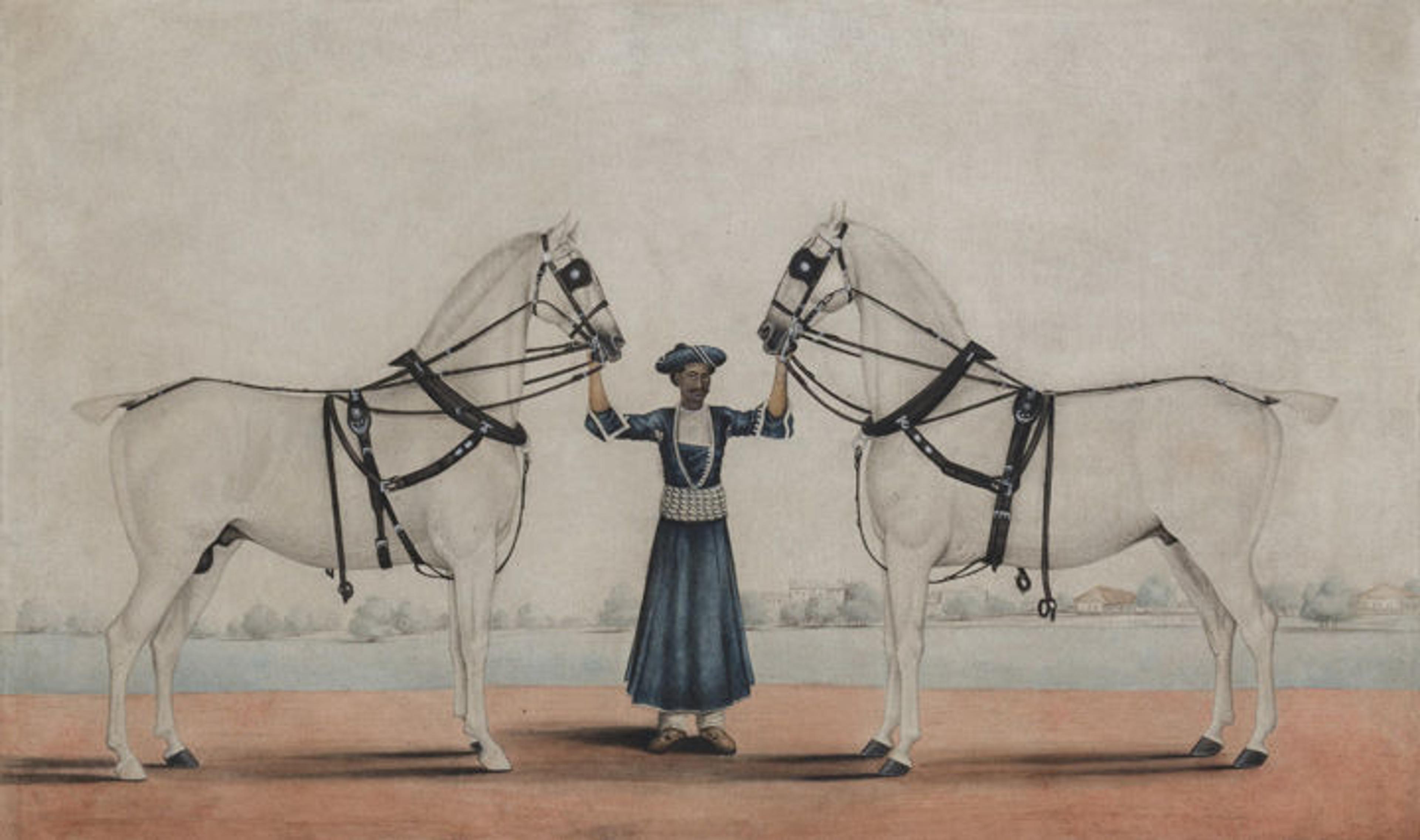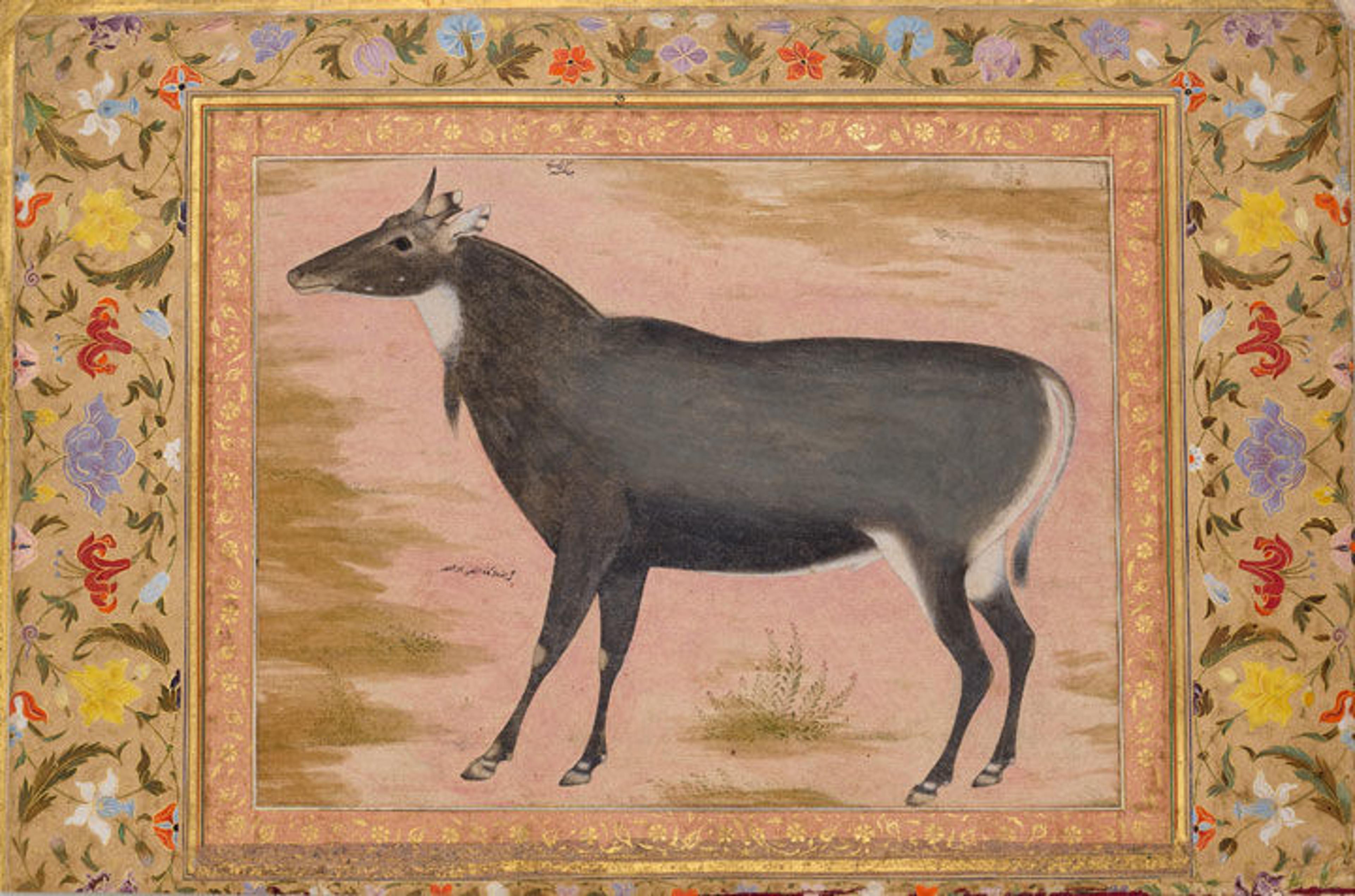
Two Sides of a Bengal River Fish, ca. 1804. India, Calcutta. Pencil, opaque watercolor, and gold on paper, H. 15 1/16 (38.3 cm), W. 21 1/8 in. (53.7 cm). The Metropolitan Museum of Art, New York, Louis E. and Theresa S. Seley Purchase Fund for Islamic Art, 2004 (2004.176)
This article, the second in a series of three written by guest author William Dalrymple, explores The Met's collection of Company School paintings, which will be featured in the exhibition Company School Painting in India (ca. 1770–1850), on view at The Met Fifth Avenue from April 10 through October 8, 2017.
«In 1784, the Chief Justice of Bengal, Sir William Jones (1746–1794), had founded an Asiatik Society "for inquiring into the History, Civil and Natural, the Antiquities, Arts, Sciences and Literature of Asia." Twenty years later, with the encouragement of the then-governor general, the Marquis of Wellesley (1760–1842), the Institute for Promoting the Natural History of India was established just outside Calcutta, at Barrackpore, with a menagerie and an aviary.»
Suddenly many of the British in India were commissioning Indian artists to paint the curiosities, architecture, castes, and natural history of India, and with the sudden boom in patronage came an influx of out-of-work Indian painters seeking commissions. Many remain anonymous, but the astonishingly high standard of work produced can be seen in the intricate and lovely painting of a male papaya tree, which was painted for Major James Nathanial Rind (d. 1814), one of the two masterpieces in The Met collection from the album of the colonial officer. Similarly, the oddly surreal study of a flat and silvery Bengal river fish—with the contrasting colors of its herringbone scales seen from top and bottom—was commissioned by the most militaristic of the all East India Company governor generals, the aforementioned Marquis of Wellesley.
Left: Male Papaya Tree, ca. 1790–1800. India, probably Calcutta. Watercolor on paper, H: 29 3/4 in. (75.6 cm), W: 21 7/16 in (54.4 cm). The Metropolitan Museum of Art, New York, Purchase, Louis E. and Theresa S. Seley Purchase Fund for Islamic Art, 2016 (2016.169)

Drawn by such patronage, several Indian painters seem to have set up business as freelancers, producing to order scenes of Calcutta and its characters, as well as portraits of houses and animals. Foremost among these was a remarkable artist named Shaikh Muhammad Amir of Karraya. The Shaikh could do anything: he was equally at home painting a Palladian house or a thoroughbred horse, a group of dhobis (servants) or a pair of dogs. His single figures are sometimes shown in the Mughal tradition in profile, as is the case with the picture A Syce (Groom) Holding Two Carriage Horses.

Attributed to Shaikh Muhammad Amir of Karraya (active 1830s–40s). A Syce (Groom) Holding Two Carriage Horses, ca. 1845. India, Calcutta. Opaque watercolor on paper, H. 12 in. (30.5 cm), W. 20 in. (50.8 cm). The Metropolitan Museum of Art, New York, Louis E. and Theresa S. Seley Purchase Fund for Islamic Art and Rogers Fund, 1994 (1994.280)
When he wished to do so, the Shaikh could paint in a more European style than any of his rivals. He had completely mastered perspective, foreshortening, and shading, which gives his work a realism and naturalism unique among Indian artists of his generation. In anatomical accuracy, his horse portraits can stand comparison even with George Stubbs. Yet there is also an indefinable Indian warmth about his work, a Mughal application of the heart as well as the head, and in his finest works, such as the wonderful Two Dogs in the Compound of a Calcutta House (now in the collection of the Victoria and Albert Museum, London), Amir shows that, like the Mughal painter Mansur (active ca. 1589–1626), he has the ability to convey an animal's character and mood with uncanny immediacy.

Painting by Mansur (active ca. 1589–1626). "Study of a Nilgai (Blue Bull)," Folio from the Shah Jahan Album, ca. 1620. Attributed to India. Ink, opaque watercolor, and gold on paper, H. 15 5/16 in. (38.9 cm), W. 10 1/16 in. (25.6 cm). The Metropolitan Museum of Art, New York, Purchase, Rogers Fund and The Kevorkian Foundation Gift, 1955 (55.121.10.13)
Amir also had a sense of humour. This is clearly evident in his celebrated picture (once in the collection of Stuart Cary Welch) of a sahib (master) being carried through Calcutta in a coffin-like palanquin, doing his best to appear nonchalant despite the obvious discomfort, his bearers grinning widely at the thought of their sahib's predicament.
Among Amir's patrons was the indomitable Fanny Parkes, who included four of his pictures in her two-volume travel book Wanderings of a Pilgrim in Search of the Picturesque. Opposite a splendid Amir picture of a Barkandaz ("a Calcutta policeman . . . too picturesque a personage to be omitted"), Parkes gives a good description of the horrors of palanquin travel: "The journey was very unpleasant," she writes, "very hot and not a breath of air . . . the dust from the trampling of the bearers' feet rolled up in clouds, filling my eyes and mouth, and powdering my hair; and my little terrier, Fairy Poppus, as the natives call her, in imitation of my 'Furry, pup, pup' was very troublesome in the palkee [palanquin]." [1]
Note
[1] Fanny Parkes, Wanderings of a Pilgrim in Search of the Picturesque (London: Pelham Richardson, 1850), 135.
Related Links
Company School Painting in India (ca. 1770–1850), on view at The Met Fifth Avenue from April 10 through October 1, 2017
RumiNations: "The Birth of Company School Painting in Calcutta, India" (September 22, 2016)